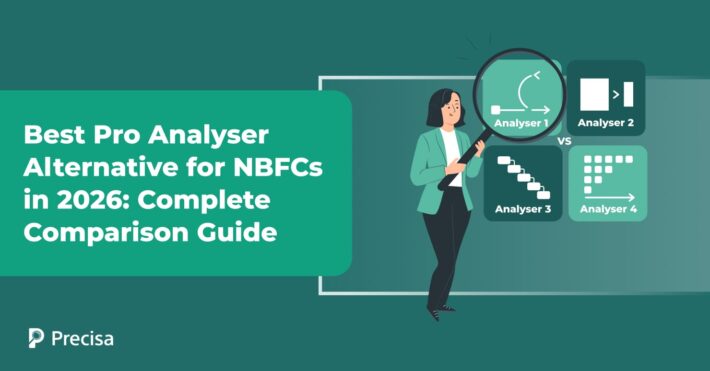The Role of Automation in Debt Recovery: Is It Right for Your Business?

Automation has positively impacted industries and has significantly contributed to the growth in the financial services domain. Lenders benefit from automating the entire lending process, including debt recovery. Replacing manual processes with automated collection procedures improves efficiency and helps lenders stay profitable.
As per reports, Gross Non-Performing Assets (GNPAs) of Scheduled Commercial Banks (SCBs) reduced by 21.1% y-o-y to Rs. 4.85 lakh crore as of December 31, 2023, due to lower slippages, steady recoveries and upgrades, and some write-offs.
While the NPA numbers are reducing, lenders can decrease them further by leveraging emerging technology. As per a study, Artificial Intelligence and Big Data Analytics significantly impact NPA Reduction in Banking as they can address almost all the factors responsible for the rise in NPA in the banking sector.
The discussion below focuses on the role of automation in debt recovery.
How Does Automation Help in Debt Recovery?

An efficient and effective debt recovery system sustains operations and allows lenders to stay profitable. The longer dues remain unpaid, the more difficult it becomes to recover them. Thus, proactive and prompt action is critical to a successful recovery mechanism.
Automation offers the following benefits for debt recovery:
1. Streamlined Debt Recovery Process
The traditional debt collection process relies on manual operations, which often cause inefficiencies and delays. As processes like data entry, document processing, and communication with debtors are automated, efficiency and productivity improve.
Automation also allows for integrating digital payment gateways and communication channels into the recovery process, reducing the time and effort required to recover debts and improving operational efficiency.
Automation minimises manual effort in administrative and repetitive tasks, allowing collectors to focus on more value-added tasks. It also aids in determining more accurate settlement prospects through comprehensive data analysis and improves the efficiency of debt recovery efforts.
2. Improved Data Accuracy and Decision Making
Errors caused by manual data entry and processing can compromise the effectiveness of debt collection efforts. Digitising eliminates these errors and improves data accuracy.
Moreover, automation allows employing tools like data analytics and predictive algorithms to gain insights into payment patterns and debtor behaviour. These tools help lenders make data-driven decisions and customise collection strategies based on the insights.
3. Better Customer Engagement
An automated debt recovery process facilitates personalised customer engagement utilising AI-driven collection techniques. Data analytics and machine learning models help lenders analyse customer responses and customise their collection strategies based on these interactions.
This personalised approach fosters trust and improves customer interaction, improving the debt recovery process.
4. Effective Dispute Management
Lenders can manage disputes more effectively with automated loan management systems. Digitisation establishes a clear trail of transactions and provides transparency at all stages.
This ensures that borrowers cannot claim that they have made payments when they have not done so. Lenders identify errors at their end faster with minimal effort, leading to a more trustworthy relationship with borrowers.
Payment disputes lead to mistrust, delay payments and complicate debt recovery. A transparent collection process with a clear trail helps both borrowers and lenders.
Automation also helps eliminate lag in passing information or miscommunication between departments. This minimises the chances of disputes, and in the case of one, it allows lenders to resolve them promptly.
5. Improves Debt Recovery Rate
Lenders also improve their debt recovery rate by leveraging Artificial Intelligence (AI) algorithms and predictive analytics. Automation with AI allows lenders to analyse borrower behaviour and predict how they will respond to various collection strategies.
They can identify the most effective collection strategy for each customer. They may also rely on targeted communication at the right time to maximise their chances of success.
Lenders are also able to reach customers faster through automated communication channels. Loan Management Systems (LMS) have an inbuilt feature to send out payment reminders before the due date and, when required, past the due to minimise defaults and maximise recovery.
Lenders can also offer personalised repayment plans to improve the chances of recovering the due payments. This allows lenders to achieve better and faster results with fewer efforts, helping them improve their debt recovery rate.
Is Automation Right for Your Business?
Automation offers significant benefits to lenders at each stage of the lending lifecycle.
However, it is critical to remember that each lender has different requirements, and their choice should depend on their needs and a combination of other aspects.
Choosing the right automation solution helps lenders improve their performance and profitability. Here are some aspects lenders must know:
- Lenders should consider the size of their portfolio, automation is ideal for handling a high volume of loans.
- If lenders offer complex debts, some human element might be necessary for debt recovery negotiations.
- Automation is ideal for repetitive tasks and can help lenders free up their workforce for more strategic tasks.
- The effectiveness of automating operations for debt recovery and otherwise also depends on the demographics the lenders cater to.
- The lenders should also consider their budgetary constraints and do a cost-benefit analysis; comparing the savings with what they will need to spend on digitisation.
- Scalability of operations should also be a crucial aspect when choosing an automation solution. The system should accommodate growth in operations without disruption or the need to make too many changes.
To Sum It Up
Automation is a powerful tool for streamlining the lending process, including debt recovery. It helps lenders improve the debt recovery rate, manage disputes better and results in better customer engagement and decision-making.
Finding the right balance between automation and manual intervention can help lenders grow and stay profitable. The chosen software should allow borrowers to pay their dues through multiple channels and have delinquency management tools for early intervention and recovery efforts.
Precisa offers solutions that help lenders automate their operations and debt recovery process.
Contact us now to learn more.



